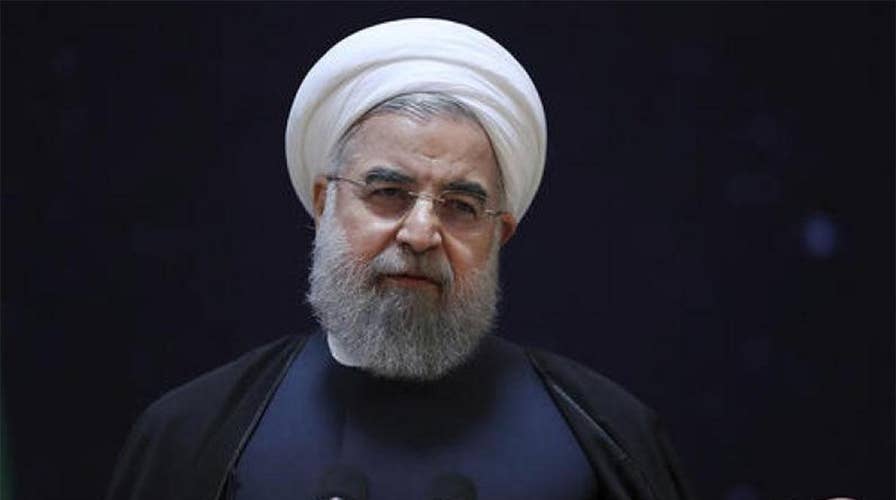Iran's parliament rebukes Rouhani over economic woes
Iranian lawmakers vote to reject President Rouhani's response to the faltering economy; correspondent Benjamin Hall reports on the deep political divisions forming as U.S. sanctions take hold.
Iran took more than 7,000 people into custody last year in a “shameless campaign of repression,” according to the human rights group Amnesty International.
“From underpaid teachers to factory workers struggling to feed their families, those who have dared to demand their rights in Iran today have paid a heavy price,” stated Philip Luther, director of the Middle East and North Africa for Amnesty International.
Those caught in the regime’s crossfires included everyone from protesters, students, and lawyers to journalists, trade unionists, environmental and women’s rights activists.
As unrest stirred across areas of the Middle East nation throughout most of last year – largely in response to the increasingly dire economic situation, government repression and women's refusal to wear the mandatory hijab – at least 112 women were arrested or remained in detention during the year.
“The regime is thirsty for our blood. We are faced with the danger of being killed or arrested or tortured all the time,” Maryam, a 40-year-old dissident from the city of Abadan, in Khuzestan Province, told Fox News. “But we have a commitment to freedom, so we have to sacrifice everything and forego many things such as a job and travel.”
Maryam said she was purged from her position as a school teacher during President Hassan Rouhani’s first term in 2014, and is now a full-time housewife and opposition activist. She distributes leaflets, works the crowd at demonstrations, and shoots videos of “the martyrs” at gravesites “for the purpose of documenting them” for their families - and posterity.
She has also been arrested, and recalled the nightmare of her own detainment.
“There were no separate male and female toilets. The walls were covered with blood. I was blindfolded during my interrogations, and even in my room, if the door or window was opened I had to be blindfolded,” Maryam said. “During my interrogation, the interrogator was very close to me and kept swearing at me. When his yelling did not give him a result, as I was ignoring him, he hit me. A few blows to the head and I was unconscious.”
Saba, a 38-year-old housewife in Tehran, described her activist work as “the struggle to oppose the darkness.” For the past two-and-a-half years, she professes to have been focused on “writing slogans on walls, hanging opposition posters on walls and bridges, attending demonstrations and offering aid during natural disasters,” such as the recent earthquake in Kermanshah.
“I have had many scary and daunting moments, moments when I could feel my heart throbbing in my throat,” Saba said. “One morning at about 6 a.m., I went to a park to put up about a dozen posters. And as soon as I did, I realized someone had been watching me from a distance and was approaching.”
At least 63 activists and researchers were also detained, according to Amnesty’s findings. Most were arrested and charged without evidence, merely on an accusation of collecting classified information. Others were formally charged with “corruption on earth,” which is considered a capital offense.
More than 20 working in the media field were slapped with flogging or long prison sentences in what Amnesty characterized as “unfair trials,” and at least 467 people were sent prison for their alleged participants in anti-government demonstrations.
SON OF AMERICAN MISSING IN IRAN SINCE 2007 PLEAS FOR HIS RETURN
IRANIAN WOMEN DEFY 'TERRORIST' LABEL, CONTINUE THEIR OPPOSITION TO REGIME
Religious discrimination also remains a rampant cause for concern, the Amnesty report highlighted. More than 200 members of the country’s largest Sufi Muslim order, the Gonabadi dervishes, which differs from the regime’s staunch Shia branch of Islam, were sentenced to prison - and lashes - for taking part in peaceful protests demanding greater freedoms.
“Mohammad Hossein Sodagar, a journalist from the Azerbaijani Turkic ethnic minority, was given four lashes after being convicted of ‘spreading lies,’” the report added.

